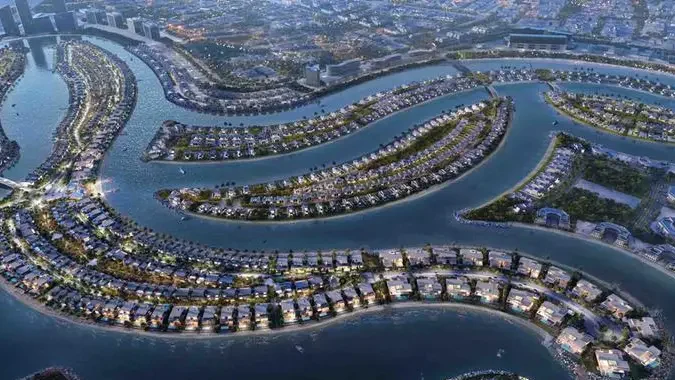Far away from the busy streets and skyscrapers of city life, a quiet and untouched paradise lies off the coast of Sharjah — the Tawaya Islands. These small islands, almost forgotten by time, are becoming known for something truly special: their untouched natural reserves and a surprising number of birds and wildlife.
Tawaya Islands, also spelled “Tawiyeh” in some local references, are a group of small, scattered islands located just off the northern shores of Sharjah. Unlike other tourist destinations in the UAE, these islands haven’t been overtaken by hotels or resorts. Instead, they remain wild, peaceful, and full of life — making them a hotspot for nature lovers, environmentalists, and birdwatchers.
A Safe Home for Birds and Wildlife
The most impressive part of the Tawaya Islands is the diversity of birds found here. From large birds flying high in the sky to tiny ones hopping between the bushes, the islands are a safe home for many species. Some of these birds are migratory — meaning they fly thousands of kilometers from other countries just to rest or breed here. Others live on the islands all year round.

Local experts have noted that the Tawaya Islands play a key role in regional bird conservation efforts. Species such as herons, flamingos, terns, and ospreys have all been spotted nesting or feeding in the area. The mangroves and shallow water provide a perfect environment for feeding and resting, especially during migration season.

There’s also a growing population of marine life in the waters around the islands. Fish, crabs, and even sea turtles have been seen close to the shorelines. Coral reefs nearby add to the underwater beauty, attracting snorkelers and researchers alike.
Protected, Yet Still Wild
What makes the Tawaya Islands even more special is that they are protected as a natural reserve. The Sharjah government, through its environment and protected areas authority, has taken steps to limit human interference. This includes restrictions on building, fishing, and tourism to ensure the islands stay untouched.
Because of this, the islands are not widely advertised to tourists. You won’t find large crowds, flashy resorts, or boats packed with visitors. Instead, access is carefully controlled, and visits are often guided or monitored to protect the fragile environment. This may seem limiting to some, but it’s actually what keeps the islands beautiful.
Many conservation groups praise Sharjah for preserving this area. In a region that’s rapidly developing, setting aside space just for nature sends a powerful message: that the environment matters.
A Treasure for Researchers and Birdwatchers

The Tawaya Islands have quietly become a favorite destination for a very specific group of people — birdwatchers and scientists. Ornithologists (bird experts) visit the islands regularly to monitor bird populations and study their behavior. These studies are important for understanding how bird species are surviving in a changing world.
Meanwhile, birdwatchers — both local and international — are drawn to the islands for a chance to spot rare and beautiful birds in their natural habitat. Some even bring cameras and binoculars, hoping to capture the perfect photo of a bird mid-flight or feeding in the shallows.
The islands are especially lively during the migration season, when birds from Asia, Africa, and Europe stop over. The sky fills with wings, and the air is alive with sound. It’s a natural show that can’t be bought or staged.
Keeping the Islands Clean and Safe
One of the ongoing challenges of managing the Tawaya Islands is balancing access with protection. Even though visitor numbers are limited, human activity can still cause harm if not managed carefully. Littering, pollution from boats, or even loud noises can disturb the birds and damage the environment.
To fight this, volunteers and environmental groups often organize clean-up events or awareness programs. Educational campaigns are also held in schools and communities to teach young people about the importance of places like the Tawaya Islands.
The Sharjah government has expressed interest in developing small-scale eco-tourism — a type of tourism that focuses on nature, sustainability, and education rather than entertainment and luxury. If done properly, this could allow more people to experience the islands while still keeping them safe for future generations.
A Reminder of Nature’s Value
In a world where concrete often replaces trees, and silence is replaced with traffic, places like the Tawaya Islands remind us what we stand to lose. These islands offer more than just pretty views — they represent balance, care, and respect for the environment.
Their existence shows that development and conservation don’t have to be enemies. By protecting the Tawaya Islands, Sharjah proves that a modern city can still honor and protect its natural roots.
The next time you think of a peaceful getaway, you might picture a remote forest or a mountain escape. But maybe, just maybe, a quiet cluster of islands in Sharjah deserves a spot on that list too — not for what they offer in luxury, but for what they protect in silence.
Also read: Why the Persian Gulf Is Crucial to the UAE’s Economy and Global Importance













